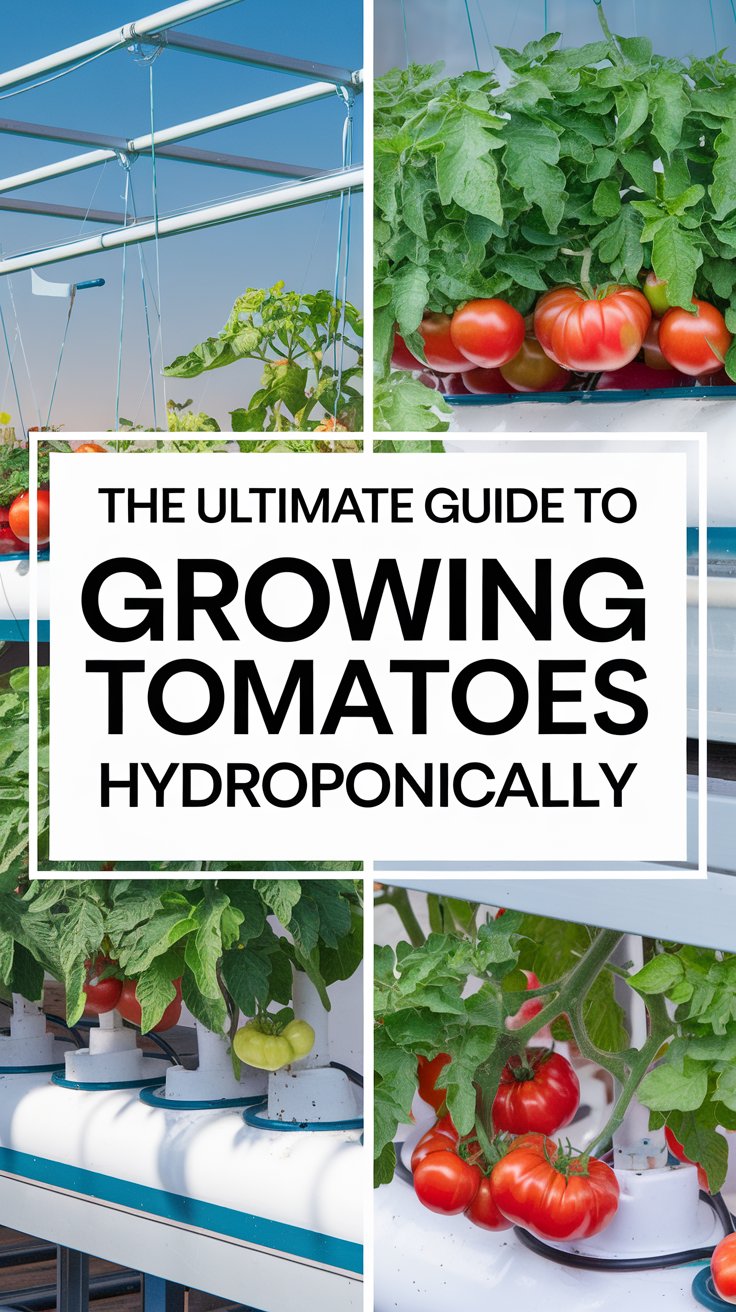Growing tomatoes hydroponically is a fantastic way to ensure a bountiful harvest, no matter the season or space constraints. Hydroponics allows you to cultivate tomatoes indoors or outdoors, using a nutrient-rich water solution instead of soil. Whether you’re a beginner or an experienced gardener, this guide will help you master the art of growing delicious, juicy tomatoes hydroponically.
Why Grow Tomatoes Hydroponically?
Hydroponic gardening offers several advantages over traditional soil gardening:
- Faster Growth: Plants grow 30-50% faster in hydroponic systems because they receive the perfect mix of nutrients directly to their roots.
- Higher Yields: Because of controlled conditions, hydroponic tomatoes tend to produce more fruit.
- Less Space: You don’t need large plots of land—just a small space with adequate light.
- No Weeds or Soil-borne Diseases: Without soil, many common gardening issues are eliminated.
- Year-Round Growth: Indoor hydroponics lets you grow tomatoes even in winter.
Step-by-Step Guide to Hydroponic Tomato Gardening
1. Choose the Right Tomato Variety
Not all tomato varieties are well-suited for hydroponics. Some of the best types include:
- Cherry Tomatoes: Small and sweet, perfect for beginners.
- Beefsteak Tomatoes: Larger tomatoes that may require more support and attention.
- Heirloom Tomatoes: Unique flavors and colors but may require more maintenance. Look for compact, high-yield varieties labeled as “determinate” (bushier and fruit-bearing over a short period) or “indeterminate” (vine-like and fruit-bearing over a long period).
2. Select the Best Hydroponic System
There are various hydroponic systems to choose from, each with its own benefits:
- Deep Water Culture (DWC): Ideal for beginners, plants grow in water filled with nutrients and oxygen.
- Nutrient Film Technique (NFT): A shallow stream of water and nutrients flows over the plant roots.
- Drip System: Nutrient solution is dripped onto the plants, allowing for better control.
- Ebb and Flow (Flood and Drain): Water floods the plants at intervals, then drains away. Consider your space, budget, and level of expertise when choosing the right system.
3. Provide Proper Lighting
Tomatoes need 12-18 hours of light per day to grow successfully. If you’re growing indoors, LED grow lights are the best choice as they are energy-efficient and provide the necessary light spectrum. Outdoor setups can rely on natural sunlight, but make sure the plants get enough exposure, especially during winter months.
4. Prepare the Nutrient Solution
Tomatoes require a balanced nutrient mix that includes:
- Nitrogen (N): For healthy foliage.
- Phosphorus (P): For strong roots and fruits.
- Potassium (K): For overall plant health and fruit production. You can purchase pre-mixed hydroponic nutrients designed specifically for tomatoes or make your own blend. Ensure you maintain the correct pH level of around 5.8-6.3 for optimal nutrient uptake.
5. Planting Your Tomatoes
Start by germinating seeds in a growing medium such as rockwool or coco coir. Once the seedlings have 3-4 true leaves, you can transplant them into your hydroponic system. Make sure the roots have access to the nutrient solution, and secure the plants properly if you’re growing vine varieties.
6. Maintaining Your Hydroponic Tomato Garden
To ensure a successful harvest, follow these maintenance tips:
- Monitor Nutrient Levels: Regularly check the nutrient concentration and adjust as the plants grow.
- Prune Regularly: Trim off lower leaves and suckers (small shoots that form between the main stem and branches) to encourage better air circulation and focus energy on fruit production.
- Support the Plants: Use trellises or stakes to support tomato vines as they grow.
- Pollinate Manually: Since indoor environments lack natural pollinators, you may need to shake the plant or use a small brush to spread pollen from flower to flower.
7. Pest Control and Disease Prevention
Although hydroponic systems reduce the risk of pests and diseases, they can still occur:
- Aphids and Spider Mites: These small insects can infest your plants. Use insecticidal soap or neem oil as a treatment.
- Fungal Diseases: Ensure good air circulation and avoid overwatering to prevent fungal issues like powdery mildew.
8. Harvesting Your Hydroponic Tomatoes
Tomatoes are typically ready to harvest 60-85 days after planting, depending on the variety. Harvest them when they’re fully ripe and firm to the touch, usually when they turn their mature color (red, yellow, or purple). Picking them at peak ripeness will give you the best flavor.
Common Challenges and Solutions
Challenge: Wilting or Yellowing Leaves
Solution: Check your nutrient levels and adjust the pH. Wilting can also be a sign of root rot or underwatering.
Challenge: Lack of Pollination
Solution: Gently shake the plants or use a small paintbrush to manually pollinate the flowers.
Challenge: Slow Growth or Poor Fruit Production
Solution: Ensure your plants are getting enough light and nutrients. You may need to prune the plant to redirect energy to fruit production.
Final Thoughts
Growing tomatoes hydroponically can be both rewarding and practical, especially if you have limited space or live in an area with a shorter growing season. By following this guide and paying attention to your plants’ needs, you’ll soon enjoy a thriving crop of fresh, flavorful tomatoes all year round.
Happy growing!









